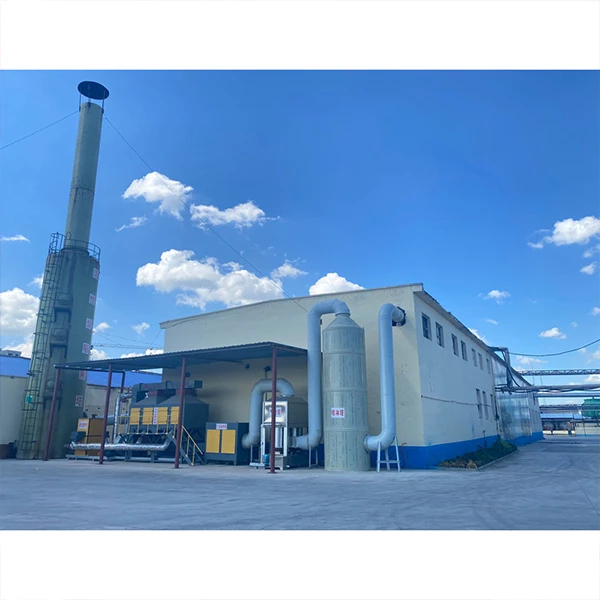The Significance of Hydroxypropyl Methylcellulose (HPMC) in Modern Chemistry
Hydroxypropyl Methylcellulose (HPMC) is a highly versatile cellulose derivative that has garnered significant attention in various fields, especially in pharmaceutical, food, and construction industries. Its unique properties, such as solubility in water, thickening ability, and film-forming characteristics, make it an essential ingredient in a plethora of products.
What is HPMC?
HPMC is synthesized by chemically modifying cellulose, which is derived from plant materials. The modification involves the introduction of hydroxypropyl and methoxy groups into the cellulose structure, which alters its physical and chemical properties. The degree of substitution of methoxy and hydroxypropyl groups significantly influences the properties of HPMC, including its solubility, viscosity, and gelation behavior.
Applications of HPMC
In the pharmaceutical sector, HPMC plays a critical role as a binder and a film-forming agent in tablet formulations. Its ability to form gels upon dissolution makes it ideal for controlled-release applications, where it can regulate the release of active pharmaceutical ingredients (APIs). Additionally, HPMC is utilized in the manufacturing of capsules and provides an effective coating that improves the stability and solubility of drugs.
Moreover, HPMC can be found in various topical formulations, such as creams and ointments. It enhances the texture and application of these products, ensuring better adhesion and spreadability on the skin. Its non-toxic nature makes it a preferred choice for formulations intended for sensitive applications.
2. Food Industry
chemic hpmc

In the food industry, HPMC functions as a thickener, emulsifier, and stabilizer. It is often used in gluten-free products to improve texture and moisture retention. The food industry values HPMC for its ability to improve the mouthfeel of products while providing a low-calorie alternative to fat. Moreover, it ensures product consistency and shelf-life stability, making it ideal for a variety of processed foods including sauces, dairy products, and baked goods.
Due to its plant-based origin, HPMC is widely accepted in vegetarian and vegan food products, reinforcing its popularity among health-conscious consumers.
3. Construction Industry
The construction sector benefits from HPMC’s excellent water-retaining properties, which are particularly advantageous in cement and gypsum-based materials. When added to mortars, plasters, and tile adhesives, HPMC improves workability, adhesion, and water retention, which are critical for achieving optimal performance during application. These properties help extend the open time for adhesives, allowing for adjustments during the installation phase without compromising the bond strength.
Environmental Impact and Safety
HPMC is often hailed for its environmental friendliness. Being derived from renewable cellulose, it poses a lesser ecological footprint compared to synthetic additives. Additionally, HPMC is biodegradable, which aligns with growing trends toward sustainability in product formulation.
As for safety, HPMC is generally recognized as safe (GRAS) by regulatory bodies for food applications. Its non-toxic profile makes it suitable for use in pharmaceuticals, food, and cosmetics, thereby ensuring consumer safety across various applications.
Conclusion
As we continue to explore innovative materials in science and industry, Hydroxypropyl Methylcellulose (HPMC) stands out as a remarkably adaptable compound. Its myriad of applications in pharmaceuticals, food processing, and construction exemplifies its significance and versatility. With ongoing research and development, the future possibilities for HPMC are expanding, promising to enhance efficiency and sustainability across multiple sectors. As industries strive to meet increasing consumer demands for safety and performance, HPMC is likely to remain a cornerstone ingredient in modern formulations.
-
Rdp Powder: Key Considerations for Wholesalers in the Building Materials IndustryNewsJul.08,2025
-
Key Considerations for Wholesalers: Navigating the World of Hpmc - Based ProductsNewsJul.08,2025
-
Hpmc Detergent: Key Considerations for WholesalersNewsJul.08,2025
-
Key Considerations for Wholesalers: China Hpmc For Tile Adhesive, Coating Additives, Concrete Additives, and MoreNewsJul.08,2025
-
Crucial Considerations for Wholesalers: Navigating the World of Construction MaterialsNewsJul.08,2025
-
Key Considerations for Wholesalers Sourcing Additive For Cement, Additive For Concrete, Additive For Putty from Additive Manufacturer Shijiazhuang Gaocheng District Yongfeng Cellulose Co., Ltd.NewsJul.08,2025




